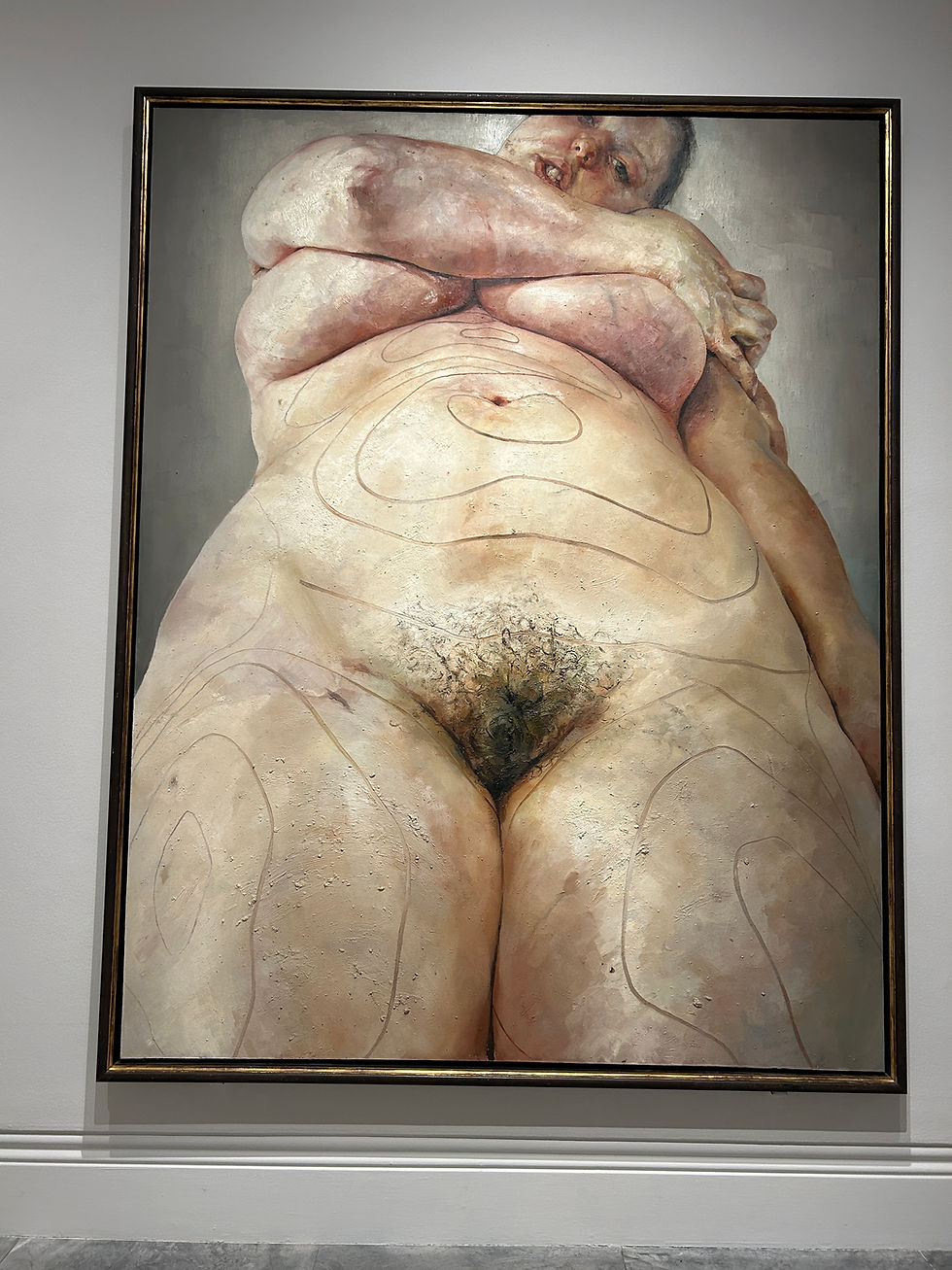If you were a painting, which one would you be?
- suzannenicholl
- Jul 22
- 3 min read
Updated: Jul 25
If your character or aspiration, or life even could be captured in a painting, which one would it be? I knew instantly which painting I would choose.
It always fills me with joy when I visit the Tate St Ives. I aspire to its carefree energy and anti-gravity nature! I can even relate to the title, as I find myself exclaiming it daily!

The story goes, according to Hilton the painting was inspired by a drunken argument with his wife, who exacerperated with her husband, danced naked on their verandah in France. Who hasn't wanted to do that?!
To me it is filled with happy energy, fun and expression. Hilton also painted Dancing Woman after the same incident, although I've not seen this one.

Other than admiring the painting, I didn't know anything about Roger Hilton, until that is I began to write this post, and after a little exploration my joyful, exuberant painting took on a rather darker side.
The figure—a spindly line sketch, bright-breasted, oddly buoyant reads as a woman dancing. Arms outstretched, legs akimbo, joyfully crying Oi Yoi Yoi!
In the article “Waving or Drowning: Hilton’s Oi Yoi Yoi revisited,” author Steven Cousins talks about the painting's origin and influence, from Mondiran's palette, Matisse's Dancers and Picasso's Three Dancers.
But he also professes to uncover darker undercurrents beneath the surface of the iconic painting, and interestingly Cousins asks us to look again, or rather—to turn it.
What if this exuberant dancer was never meant to be upright? What if Hilton made the final gesture not with a brush, but with a nail in a wall—rotating the canvas 90 degrees, and with it, the entire meaning?

Turn it from the orientation we are accustomed to and the figure slumps, not springs. The dance becomes collapse. The blue edge is no longer decorative but a possible bed, or floor, or something to fall from.
Gravity returns and the line of her back curves under weight. Breasts droop and one arm trails, helplessly or is even bound.
Even the cry -oi yoi yoi - changes in tone. A woman, not dancing with joy but a woman suppressed, controlled, vulnerable, undone?
Cousins traces this reorientation to Hilton’s practice of painting flat on the floor and letting the direction emerge as the image developed, sometimes arbitrarily. But here, he suggests that Hilton’s decision to rotate the painting (upright) and change how the figure is read, was intentional, to fit in with the liberation and lightheartedness of the era.
The rotation, Cousins argues, sanitises an uncomfortable sexual scenario. Rotated, the painting feels voyeuristic and oppressive. Upright, it becomes a liberated, a celebration of the female form, in keeping with the optimistic mood of 1963 London and St Ives. In other words, the flip rewrites the painting’s gender politics.
The author also notes that the airborne silhouette resembles figures by the younger Cornish painter Anthony Shiels. The rotation may therefore have been Hilton’s way of borrowing Shiels’ energised poses while disguising an uncomfortable undercurrent.

If this interpretation is correct, the figure leaves us with uncertainty, inviting a different reading than I imagined and may lead me to rethink my choice. That will teach me to dig around and fall down rabbit holes!
That said Cousins may have this all wrong. But what he has taught me however is to turn it, and see what else I can learn from a painting. Who knows where that may lead.
If you have painting that best describes you, or your alter-ego do tell. I'd love to know what and why.










Comments